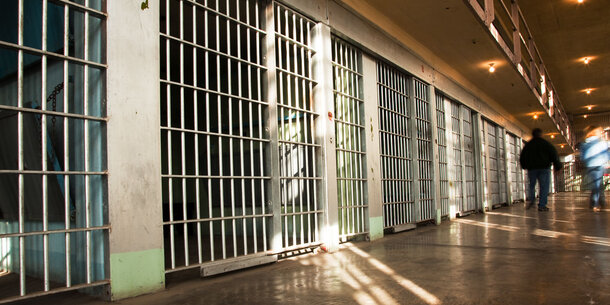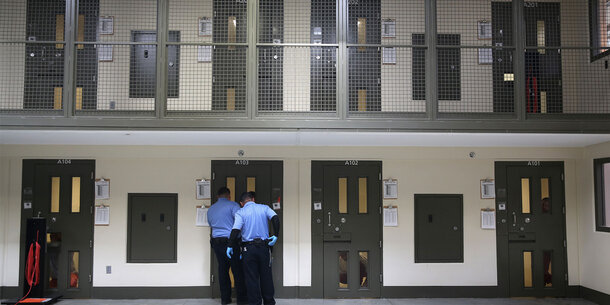Polling showed that crime was a major issue for midterm voters. Republicans tried to capitalize on those concerns, but it wasn’t a surefire strategy, especially in races for prosecutor and sheriff’s offices. It’s not surprising since in many cases, criminal justice reform is a bipartisan issue.
While the U.S. prison population has declined since 2009, the nation’s incarceration levels still stun. About 1.2 million people are currently behind bars in state and federal prisons, and local jails admit 8.7 million people every year. Recognizing that this level of incarceration has dire societal consequences, from disproportionately punishing people of color to exacerbating economic inequality, the last few decades have seen a remarkable bipartisan effort to reduce unnecessary incarceration at both the state and federal levels.
This is perhaps best illustrated by the First Step Act, which was passed by Congress with overwhelming bipartisan support and signed into law by President Trump in 2018. The law has already cut the federal prison population by several thousand, restored judicial discretion in some drug cases, and retroactively reduced certain drug sentences.
More recently, cities across the country have seen increases in some crimes, although today’s crime levels are significantly lower than they were in the 1980s and early 1990s. The causes of these increases are complicated, and the pandemic played a significant role in disrupting communities: economic uncertainty spiked, after-school programs shut down, and there was greater gun availability.
With crime on people’s minds, it soon became the focal point for many Republican candidates’ campaigns. Vox reported that Republicans had spent $157 million on crime-related ads at the national level by November 3, and the Wall Street Journal reported that crime was highlighted in more than a third of all congressional campaign television ads that aired after Labor Day in Pennsylvania and Wisconsin.
Of course, many factors were at play in the election — from the economy to the candidates themselves — but it’s clear that painting an opponent as “soft on crime” did not necessarily prove to be a ticket to victory. In the Pennsylvania Senate race, for example, Republican candidate Mehmet Oz tried to make an issue of Democratic Lt. Gov. John Fetterman’s advocacy for criminal justice reform, such as his support for reducing the number of people who served life sentences in Pennsylvania. Oz’s first television ad in the general election claimed, “John Fetterman wants to release one-third of prisoners and eliminate life sentences for murderers.”
In the New York State governor’s race, Republican Lee Zeldin spent months attacking Democratic incumbent Kathy Hochul on crime and for not substantially rolling back the state’s recent bail reforms. One Zeldin campaign ad presented an announcer stating, “You are looking at actual violent crimes caught on camera in Kathy Hochul’s New York. And it’s getting much worse.”
Polls showed that Zeldin and Oz made gains after those ads aired. But neither prevailed in the end.
Similarly, in the House race for the Raleigh area, North Carolina Democratic State Sen. Wiley Nickel defeated Republican Bo Hines despite GOP ads painting Nickel, a long-time criminal defense attorney, as “the criminal choice for Congress.”
There are more examples in prosecutor races. In Dallas County, Democratic District Attorney John Crezuot won reelection even after his opponent, Faith Johnson, criticized him for reducing the prosecutions of some misdemeanor thefts and marijuana cases, claiming this caused an increase in crime. In Minneapolis, voters elected a career public defender, Mary Moriarty, who highlighted the need to divert more people from the justice system. In contrast, the campaign website of her opponent, retired judge Holton Dimick, stated that the candidate believes in “sending a strong message from the office that if you commit a crime, you will face consequences.” And in Hays County, Texas, Democratic former defense attorney Kelly Higgins successfully ran as a reformer, campaigning on establishing mental health courts for nonviolent offenses. Higgins beat Republican David Puryear, who campaigned using “tough-on-crime” rhetoric.
We saw similar signs in elections for sheriff as two incumbents who are both notorious for running troubled jail systems were voted out of office. Los Angeles Sheriff Alex Villanueva lost to former Long Beach police chief Robert Luna, who promised to work more closely with jail oversight entities. In Bristol County, Massachusetts, local Mayor Paul Heroux (D) ousted Sheriff Thomas Hodgson (R). A state investigation had found that the sheriff’s office under Hodgson violated the civil rights of federal immigration detainees in its custody.
But it was far from a clean sweep for candidates who supported criminal justice reform. In a hotly contested Senate race in Wisconsin, GOP Sen. Ron Johnson ran ads painting his Democratic opponent Lt. Gov. Mandela Barnes as “dangerously liberal” on crime, taking issue with Barnes’s support for ending cash bail. Johnson defeated Barnes and kept his Senate seat. And in Douglas County, Nebraska, Don Kleine won reelection as district attorney despite his opposition to a bipartisan bill to reduce prison overcrowding in the state.
It’s encouraging that so many candidates who were hammered for supporting reforms prevailed. We know that keeping our communities safe requires real investments in housing, health care, education, and job creation. Yet progressive candidates must acknowledge that crime is a real and important concern for their communities. Connecting the dots is essential — reducing crime and improving our justice system go hand in hand.



